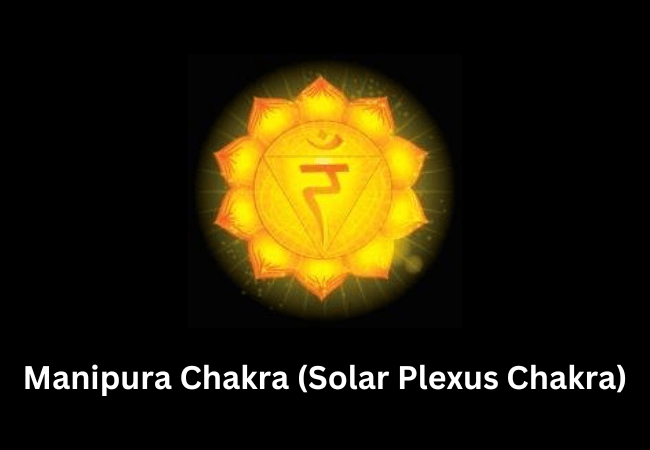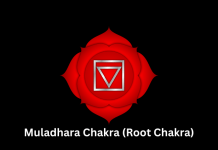In the ancient tapestry of Vedic tradition, the Manipura Chakra, often referred to as the Solar Plexus Chakra, stands as a radiant gem, the third primary chakra that holds profound significance. Located just above the navel, Manipura derives its name from Sanskrit, meaning “city of jewels” or alternatively translated as “resplendent gem” or “lustrous gem.” This vibrant chakra is associated with colors like yellow, blue in classical tantra, and red in the Nath tradition, embodying the fiery power of transformation. Dive with us into the depths of Manipura, understanding its role in digestion, personal power, and inner harmony.
The Inner Sun: Location and Essence
Sitting gracefully above the navel, Manipura Chakra is often visualized as a brilliant sun, radiating warmth and vitality. It symbolizes personal power, self-esteem, and the transformative energy that resides within us. Its association with the color yellow reflects the chakra’s radiant nature.
Fanning the Flames: The Power of Transformation
Manipura Chakra is intrinsically linked to fire and its transformative potential. It is believed to govern digestion and metabolism, acting as the dwelling place of Agni, the fire god, and the vital wind Samana Vayu. Within this chakra, the energies of Prana Vayu and Apana Vayu, representing inward and outward flowing energy, harmoniously converge.
Nurturing Digestive Vitality
The coeliac plexus, which innervates most of the digestive system, finds its home in Manipura. In chakra-based medicine, practitioners focus on this area to promote healthier digestion, elimination, and the proper functioning of the pancreas, kidneys, and adrenal glands. An imbalance in this area, characterized by weak Agni (fire), may lead to incomplete digestion of food, thoughts, and emotions, resulting in the accumulation of ama or toxicity.
Visual Symphony: Appearance and Symbolism
Manipura is visually depicted as a downward-pointing red triangle, signifying the tattva or element of fire, set within a vibrant yellow circle. Ten dark-blue or black petals, reminiscent of rain-laden clouds, adorn this chakra, each carrying its own significance.
The Seed Mantra: ‘रं‘ (ram)
At the heart of Manipura resides the seed mantra ‘रं’ (ram). Above this sacred syllable, we encounter the deity Rudra. Rudra, with his three eyes and ancient countenance, embodies the essence of fire. He is often depicted with silver hair and smeared with white ashes, making gestures of granting boons and dispelling fear.
The Divine Duo: Rudra and Lakini
Rudra’s Shakti, the goddess Lakini, is equally captivating. With her dark-blue or black vermilion color, three faces, each adorned with three eyes, and four arms, she holds a thunderbolt, an arrow, and fire. Like Rudra, she bestows boons and dispels fear while seated gracefully on a red lotus.
The Petal Palette: Symbolism and Vrittis
The ten petals of Manipura are adorned with the syllables डं, ढं, णं, तं, थं, दं, धं, नं, पं, and फं (ḍaṁ, ḍhaṁ, ṇaṁ, taṁ, thaṁ, daṁ, dhaṁ, naṁ, paṁ, and phaṁ) in a dark-blue hue. These petals symbolize the vrittis or thought patterns associated with spiritual ignorance, thirst, jealousy, treachery, shame, fear, disgust, delusion, foolishness, and sadness.
The Energetic Web: Manipura and Prānas
The ten petals of Manipura correspond to the ten Prānas, representing currents and energy vibrations regulated by the Manipura Chakra. Among these are the five Prāna Vayus: Prāna, Apāna, Udāna, Samāna, and Vyāna, as well as the five Upa Prānas: Nāga, Kūrma, Devadatta, Krikala, and Dhananjaya.
Body and Beyond: Manipura’s Association
Manipura is often considered to be behind the navel. Some traditions also acknowledge a secondary chakra known as the Surya Chakra, located at the solar plexus. This chakra absorbs and assimilates Prana from the sun, connects with the sense of sight, and influences movement, particularly related to the feet.
Across Traditions: A Comparative Glimpse
The Manipura Chakra finds resonance in various spiritual traditions:
Vajrayana: In Vajrayana, Manipura is depicted as a triangular, red chakra with 64 petals or channels. It plays a crucial role in practices like tummo, involving inner heat cultivation and the ascent of energy along the central channel, akin to raising the kundalini in Hindu terminology.
Chinese Qigong: In Chinese qigong, there are parallels with the concept of “Kua” or door, connecting with three Dantians that convert different energies within the body.
Sufi Lataif-e-sitta: Within Sufi traditions, the Manipura Chakra corresponds to the nafs or lower self, situated below the navel.
Kabbala: Western occultists associate Manipura with the sephirot of
Hod and Netzach, representing energy control and the breaking down of energy into various forms.
Exploring Manipura: Neo-Pagan and Pagan Perspectives
Neo-pagan and pagan traditions incorporate the concept of breathing into the solar plexus, infusing it with intent and energy. This practice aims to promote self-love, appreciation, and acceptance, guiding individuals to frame their attitudes positively.
In conclusion, the Manipura Chakra, the radiant Solar Plexus Chakra, beckons us to explore its transformative power. It symbolizes personal power, digestion, and the radiant force of fire within. As we delve into its symbolism and significance, we unearth a profound understanding of our inner selves and the energies that shape our lives. Manipura serves as a reminder that, like the sun, we too possess the power to radiate brilliance, ignite transformation, and nourish our inner fire.











































